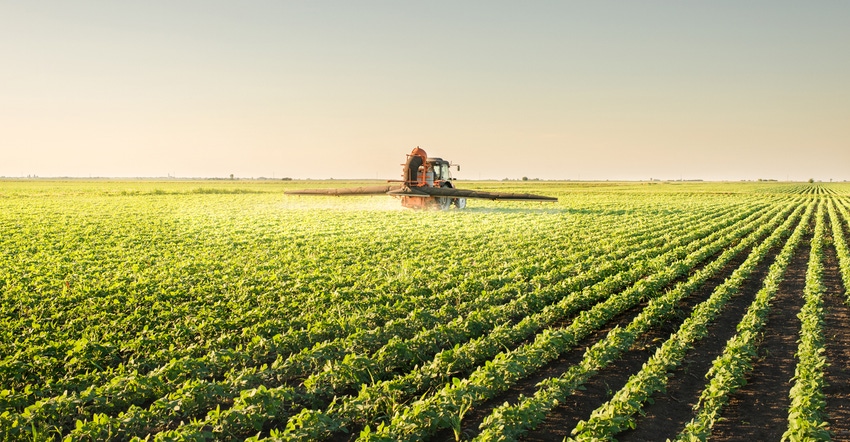
With spring around the corner, many growers will be preparing to make burndown applications — some of them using UAN as a carrier for their burndown herbicide. While liquid products like UAN 32% or 28% offer an advantage in their flexibility and ability to be used with herbicides, Derek Rapp, technical agronomist for Koch Agronomic Services, notes applying UAN as a carrier in burndown applications comes with some additional risks to consider.
Rapp notes in UAN 28%, about 50% of the nitrogen is in the urea form, 25% is in the ammonium form, and the remaining 25% is in the nitrate form.
"Urea is at a higher risk for volatilization than other forms. There can be substantial amounts of volatilization losses in about three to five days with urea," Rapp explains. "Ammonium is plant-available, and it has the positive charge that allows it to adhere to the soil CEC [cation exchange capacity]. It's not at as high of a risk for loss to leaching and denitrification.
“Nitrate is a plant-available form of nitrogen, but because it has a negative charge, it is not able to adhere to the soil CEC. It can be more susceptible to loss via leaching and denitrification, which isn't uncommon when you have a lot of precipitation in spring."
With multiple forms of nitrogen, it can be helpful to use two kinds of nitrogen stabilizers to protect the nitrogen applied when there is a risk of losing nitrogen to leaching and denitrification, as well as volatilization. In this case, using a nitrification inhibitor to protect against leaching and denitrification, as well as a urease inhibitor to protect against volatilization — protecting the most vulnerable 75% of the UAN solution above and below ground. Koch's Centuro and Anvol are two options for a nitrification inhibitor and urease inhibitor, respectively.
"With the additional risk for applying UAN as a burndown application, we have to look at those different forms, but also the timing of that application," Rapp says. "Most of these applications are probably being made between one to two weeks before planting, so there's not going to be any crop uptake for some time. Based on what we see across the Corn Belt, roughly 40 or 50 days will have to occur following application before crop demand increases. So we need to get to that V5 to V6 timing."
That's why it's important to think of UAN as more than a carrier for herbicide and as a part an overall nutrient management strategy — and use nitrogen stabilizers with these applications to help make sure the nitrogen is available for crop uptake once the plant is actively growing.
"We are big proponents of the 4R Nutrient Stewardship initiative and urge growers to implement the framework with their UAN burndown applications,” Rapp says. "Incorporating a nitrogen stabilizer with their UAN burndown applications aligns with the 4Rs and can help growers reach their cropping system goals while protecting their nitrogen investment.”
"Since UAN can be at risk from all three forms of nitrogen loss we encourage growers to think about UAN burndown applications as part of their total nutrient management strategy, and utilize this application to meet crop nutritional needs,” Rapp says.
About the Author(s)
You May Also Like






